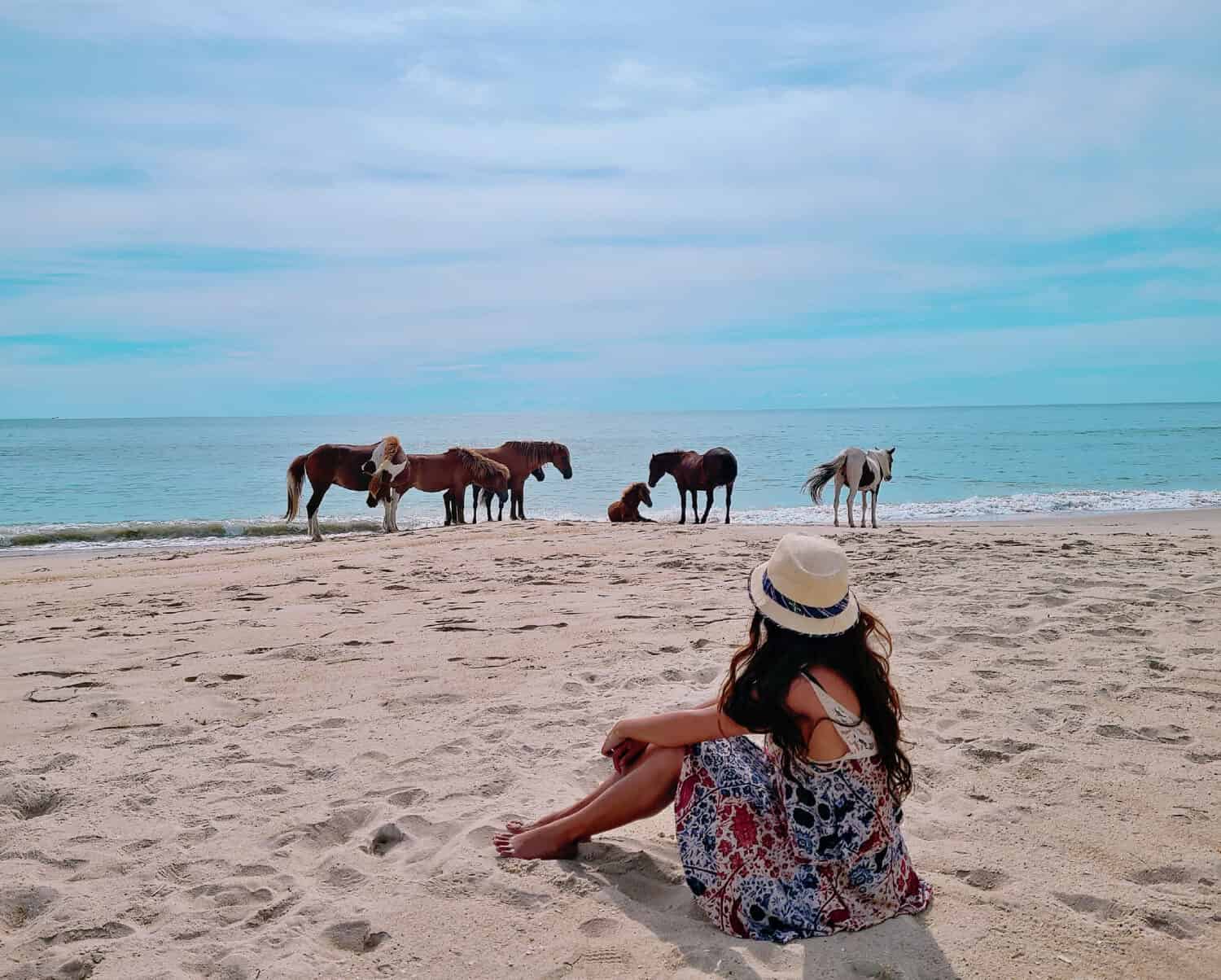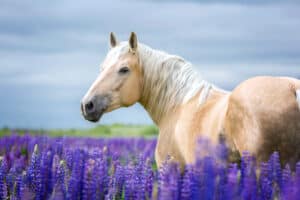Wild horses of the West are more well-known, but wild horses also exist on the East Coast. The wild horses in Maryland, specifically, are a small population of Banker Horses. They live on a small island, roaming freely along the beach and among the marsh areas in search of forage. You can see them anywhere you go on Assateague Island since they’re not contained by fences like some feral herds in other East Coast states. Want to learn more about the wild horses roaming Maryland before you go see them for yourself? Let’s explore why they live there in the first place!
Why Are There Wild Horses in Maryland?
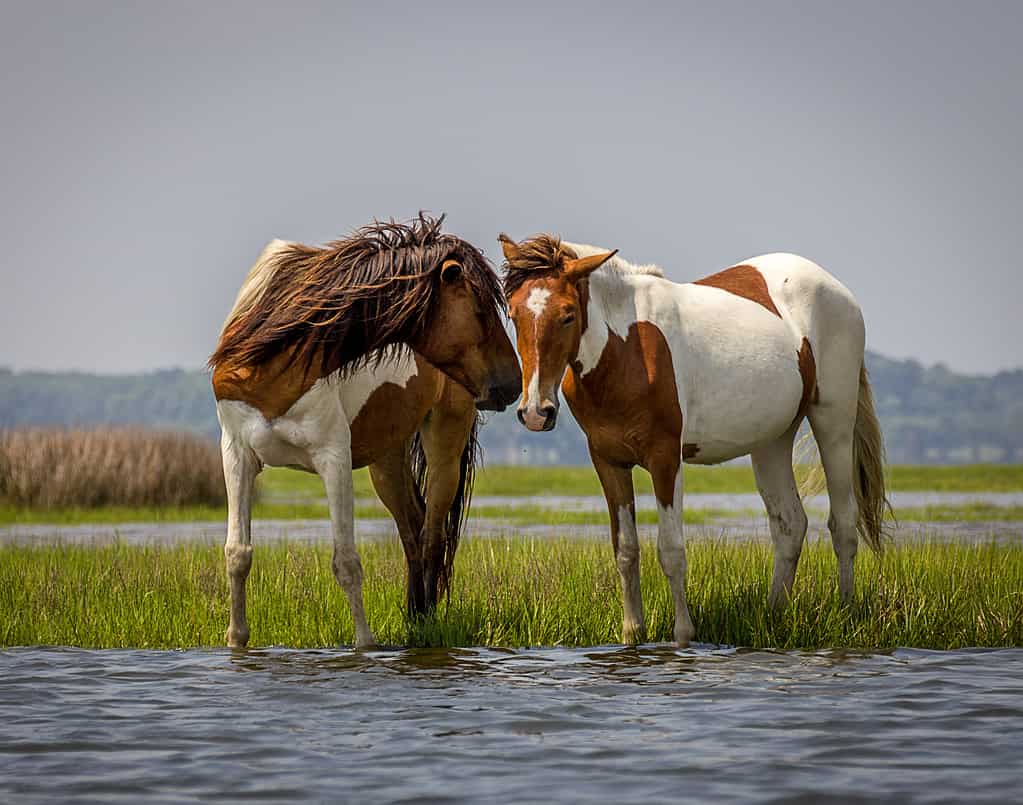
The wild horses of Assateague Island have been there for over 300 years.
©Benalbright/iStock via Getty Images
According to the National Park Service — the organization that manages the herd’s population — Maryland’s wild horses came to Assateague Island in 1669 when English settlers brought their livestock to America. Descendants of the horses brought over have lived wild on the island since.
There were only about 10 wild horses still roaming Assateague when it became a national seashore in 1965, but their population numbers have increased slowly over time.
That’s largely due to conversation and management efforts by the NPS. To keep Maryland’s wild horse population below the viable threshold of 150 animals to sustain the land they live on, it began research in 1986. What started as a failed experiment brought forth the actual solution: wild horse contraceptives.
Two years later in 1988, the NPS administered Porcine Zona Pellucida (PZP) to 26 mares. This kept the population from increasing to the point of negatively impacting the barrier island ecosystem. In 2023, the viable threshold is lower — about 80-100 animals — and continues to shift as more research comes out.
Maryland’s Wild Horse Population

The wild horses drink from freshwater ponds in the grassy marshes on Assateague Island in Maryland.
©Zach Zimet/iStock via Getty Images
How do we know so much about the wild horse population in Maryland? Scientists complete surveys six times a year — on foot or with a vehicle — to keep an eye on population numbers and gather other important data. The goal of their research is to protect the long-term health of the wild horses while minimizing their impact on the protected land they live on.
2023 Herd Numbers
Currently, 75 wild horses live in Maryland. As of March 2023, there are 29 stallions and 46 mares spread across Assateague Island.
What Do The Wild Horses on Assateague Island Eat?
Just like the wild horses out West learned how to live off the land, the horses on Assateague adapted to the diet on the island. Marsh grass, dune grass, cordgrass, greenbrier, beach grass, three-square sedge, poison ivy, and freshwater ponds provide the sustenance they need to survive in the wild.
Where to See Wild Horses in Maryland
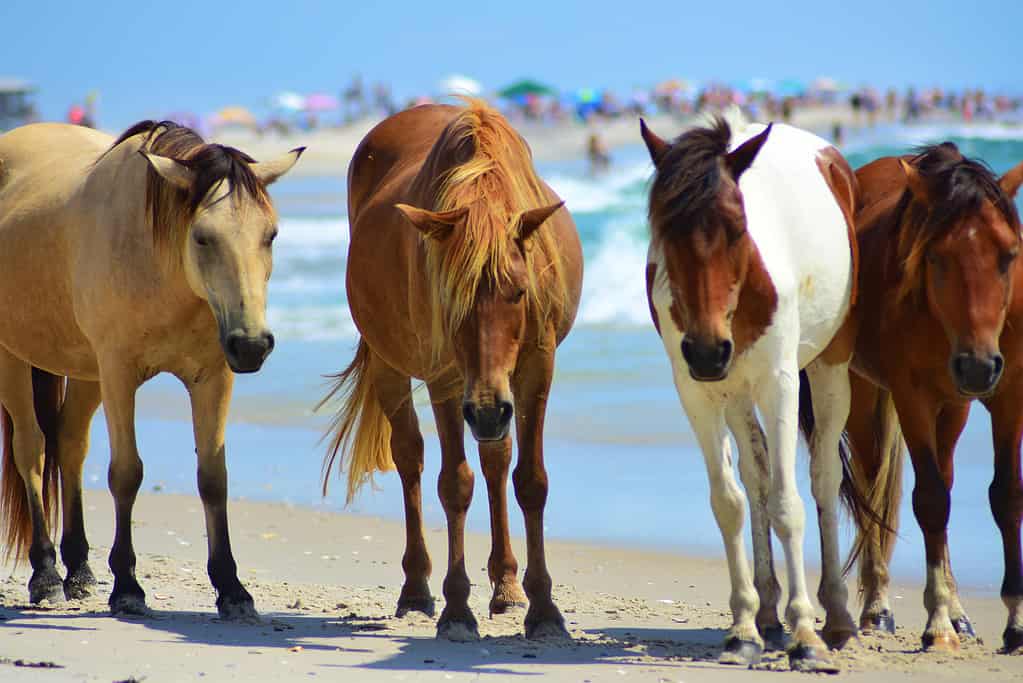
You can see the wild horses by hiking around the island or walking the beach on Assateague.
©Robert Warner/iStock via Getty Images
Assateague Island National Seashore is a 37-mile-long barrier island, boasting the longest beach in Maryland. It is home to an abundance of wildlife, including wild horses!
They roam the island freely, so there’s not one single spot where you’re guaranteed to see them. However, if you stay curious and have patience, you might stumble across them as you explore the island or walk along the endless miles of beach.
The wild horses in Maryland are often spotted:
- On the coastline
- Grazing among the marshland
- In the parking lots
- At the campgrounds
- In the National Park’s OSV (Over Sand Vehicle) area
- On the Life of the Marsh boardwalk trail and Life of the Forest trail
Per park rules, keep a distance of about 40 feet or more. They’re feral animals!
Can You Drive to See the Wild Horses on Assateague Island?
Yes, you can drive to see the wild horses on Assateague Island. The North end is a common area to spot the horses — check the parking lots or at the campgrounds! However, the entire island is not drivable so be sure to plan for that. You need to hike on the trails or visit the beach to see these magnificent animals in their natural habitat.
Is Camping Allowed on Assateague Island?
There are two places you’re allowed to camp on the Maryland side of Assateague Island: campgrounds,
First, reservations are available between mid-April to mid-October to camp at Assateague Island State Park. There are 342 campsites for tents, cars, and RVs.
Second, backcountry camping is allowed on Assateague Island with the proper permits. Choose between oceanside and bayside sites to set up camp with the hopes of spotting the wild horses who roam this area.
A word of advice: biting insects swarm the bayside campsites from April to October. Consider camping here in the off-seasons to avoid the bugs or choose the oceanside campsite instead.
The Best Time of Year to See Wild Horses on Assateague Island
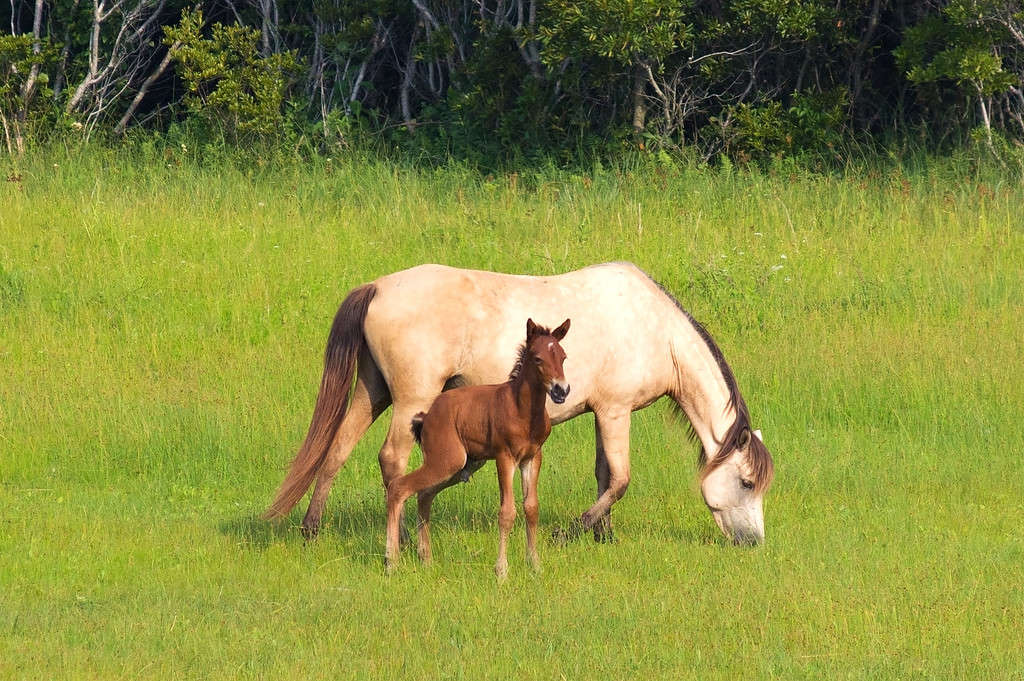
You can see wild horses year-round on Assateague Island, but if you want to see the foals, come during the summer months!
©amedved/iStock via Getty Images
The best time to see the wild horses in Maryland is from April to October. However, they live on the island year-round if you’re keen to explore long enough.
These are the months we recommend that you visit Assateague to see the horses because foals born in the spring will be active during the summer, but there are fewer bugs to contend with in the fall.
Which is Better to Visit: Assateague or Chincoteague Island?

Assateague is known for its wild horses but is also popular for bird watchers and beach-goers.
©John M. Chase/Shutterstock.com
If you know about Assateague Island, you probably know about Chincoteague. That’s because they are both barrier islands protecting their respective states of Maryland and Virginia. And because they are both home to the East Coast’s very first wild horses.
So the answer to which island is better to visit is both! If that’s not possible and you have to choose, here is a side-by-side comparison of the two most popular spots to see wild horses on the East Coast.
| Assateague Island | Chincoteague Island |
|---|---|
| 37-miles-long | 7-miles-wide |
| Home to 75 wild horses | Home to 150 wild horses |
| Uninhabited except for campgrounds | Tourist destination town with restaurants, shopping, and hotels |
| In Maryland | In Virginia |
| Managed by the National Park Service | Managed by the Chincoteague Volunteer Fire Company |
The choice is yours… happy wild horse watching!
Thank you for reading! Have some feedback for us? Contact the AZ Animals editorial team.

